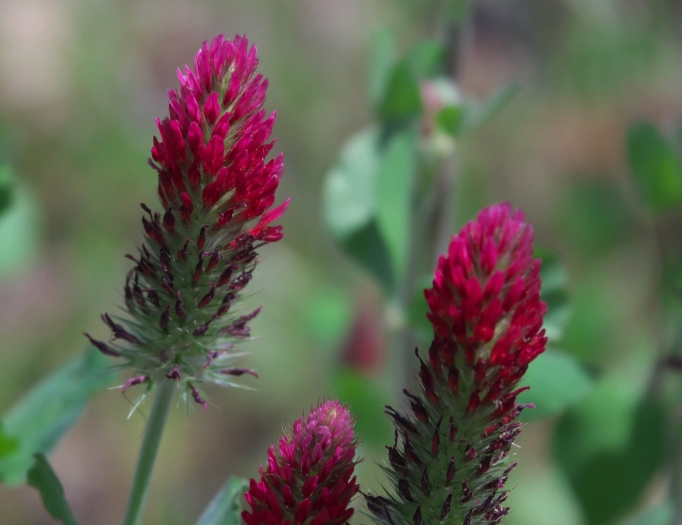Crimson Clover
(Trifolium incarnatum)
Crimson Clover (Trifolium incarnatum)
/
/

Robert Webster
CC BY-SA 4.0
Image By:
Robert Webster
Recorded By:
Copyright:
CC BY-SA 4.0
Copyright Notice:
Photo by: Robert Webster | License Type: CC BY-SA 4.0 | License URL: http://creativecommons.org/licenses/by-sa/4.0/ | Rights Holder: Robert Webster | Publisher: iNaturalist | Date Created: 2024-04-08T18:34:55-07:00 |

























Estimated Native Range
Summary
Trifolium incarnatum, commonly known as crimson clover or Italian clover, is an herbaceous annual plant native to temperate regions of Europe. It is often found in grasslands, meadows, and fields, where it thrives in well-drained, fertile soils. Crimson clover reaches a height of 8-20 inches and is notable for its trifoliate leaves and vibrant crimson flower spikes that are 1-2 inches long, blooming in late spring to early summer. The flowers are highly attractive to pollinators and add a splash of color to the landscape.
Crimson clover is valued for its ability to fix nitrogen in the soil through a symbiotic relationship with Rhizobia bacteria, making it an excellent cover crop for improving soil fertility. It is also used as forage for livestock due to its high nutritional value and is effective in erosion control. In ornamental settings, it serves as a beautiful ground cover or addition to wildflower meadows. Crimson clover prefers full sun to partial shade and requires moderate watering. While it is generally low-maintenance, it can become weedy and potentially invasive outside its native range, so caution is advised.CC BY-SA 4.0
Crimson clover is valued for its ability to fix nitrogen in the soil through a symbiotic relationship with Rhizobia bacteria, making it an excellent cover crop for improving soil fertility. It is also used as forage for livestock due to its high nutritional value and is effective in erosion control. In ornamental settings, it serves as a beautiful ground cover or addition to wildflower meadows. Crimson clover prefers full sun to partial shade and requires moderate watering. While it is generally low-maintenance, it can become weedy and potentially invasive outside its native range, so caution is advised.CC BY-SA 4.0
Plant Description
- Plant Type: Herb
- Height: 1-2 feet
- Width: 1-2 feet
- Growth Rate: Rapid
- Flower Color: Red
- Flowering Season: Spring
- Leaf Retention:
Growth Requirements
- Sun: Full Sun, Part Shade
- Water: Low, Medium
- Drainage: Fast, Medium
Common Uses
Bee Garden, Butterfly Garden, Deer Resistant, Erosion Control, Groundcover, Low Maintenance, Rabbit Resistant
Natural Habitat
Temperate regions of Europe, particularly in grasslands, meadows, and fields
Other Names
Common Names: Crimson Clover, Incarnate Clover, Italian Clover, Scarlet Clover, Benibana-Tsumekusa
Scientific Names: , Trifolium incarnatum, Trifolium incarnatum f. albiflorum, Trifolium incarnatum f. minor, Trifolium incarnatum f. roseum, Trifolium incarnatum subsp. molinerii, Trifolium incarnatum subsp. molinerii, Trifolium incarnatum var. albiflorum, Trifolium incarnatum var. album, Trifolium incarnatum var. atropurpureum
GBIF Accepted Name: